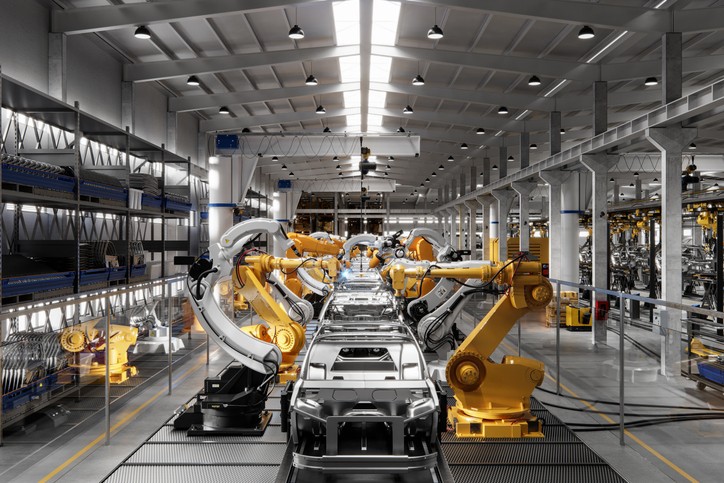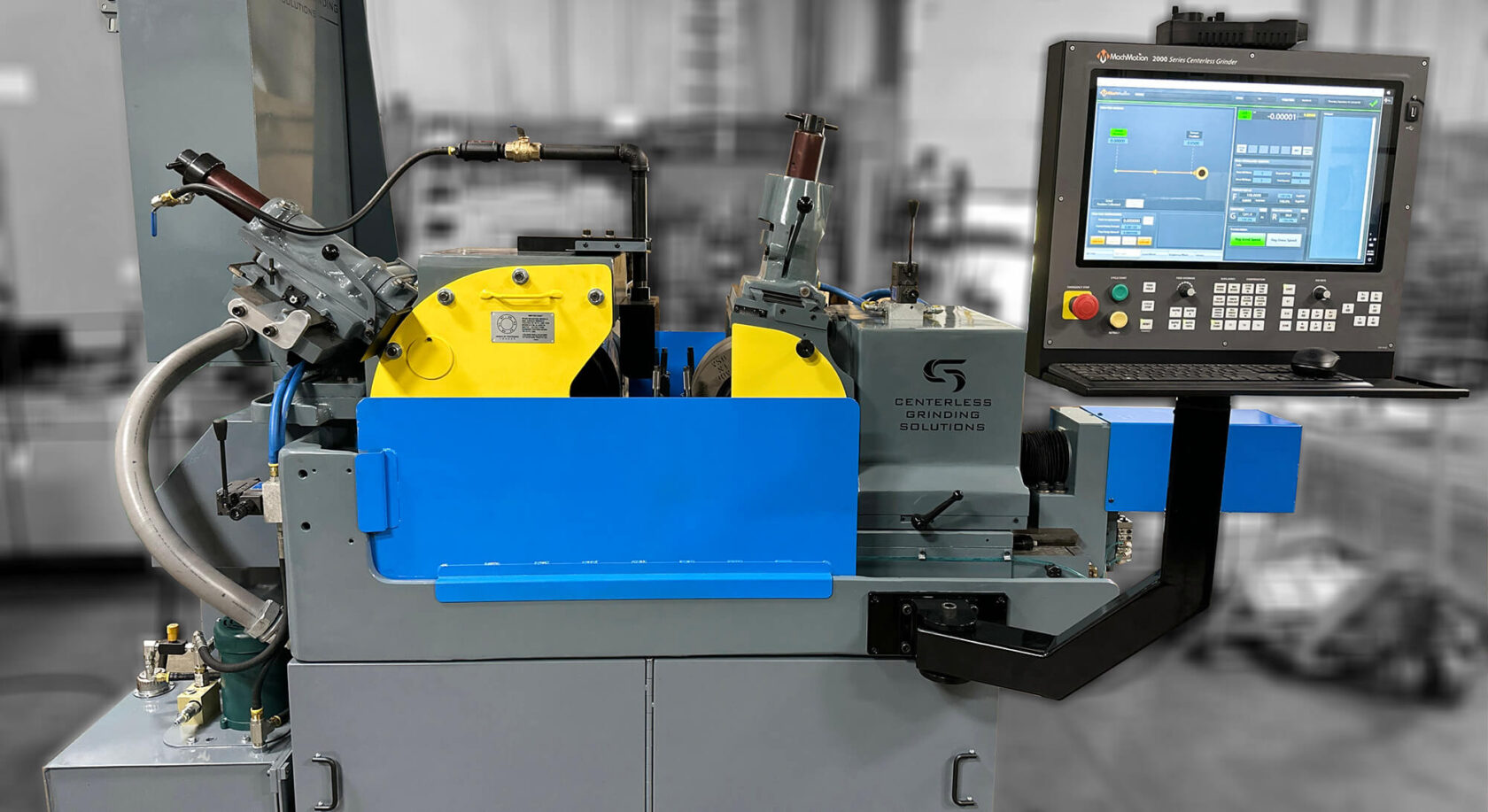
The Role of Centerless Grinding in Automotive Industry Applications
In the automotive industry, precision is not just a requirement; it’s a necessity. To ensure optimal performance, reliability, and efficiency, every component must be crafted with laser-like accuracy, from the tiniest valve stem to the mightiest crankshaft. Yet, consistently achieving this precision across millions of parts is a monumental task. This is where centerless grinding steps in, which has silently but significantly shaped the automotive manufacturing landscape. Its ability to produce high-precision cylindrical parts with unmatched speed and consistency has earned it the title of the unsung hero of the automotive world. In this blog post, we’ll delve into the pivotal role centerless grinding plays in shaping the modern automobile and why it’s become an indispensable tool for automakers striving for perfection in every vehicle they produce.
Beyond the Lathe: Unveiling the Power of Centerless Grinding
When most people think of machining, they picture massive lathes and whirling drill presses. But centerless grinding is a different beast altogether. Unlike traditional machining methods, centerless grinding doesn’t rely on clamps or chucks to hold the workpiece in place. Instead, the part rests between two grinding wheels: a larger, slower-moving regulating wheel and a smaller, faster-spinning grinding wheel. As the wheels rotate, they remove material from the workpiece with unparalleled precision, creating a perfectly cylindrical part with a flawless surface finish.
Centerless grinding is not just about its unique setup. Its true strength lies in its versatility. It can handle a wide range of automotive parts, from delicate fuel injector components to rugged transmission shafts, with ease. Consider the precision required to grind a tiny valve stem, where even the slightest deviation can affect engine performance. Or think about the challenge of grinding a drive shaft, where any imbalance could lead to vibrations and premature wear. Centerless grinding excels in these applications and more, producing parts that meet the strictest tolerances and the highest quality standards. Whether it’s a critical safety component or a key engine part, centerless grinding ensures that every piece performs flawlessly, mile after mile.
A Perfect Fit: Why Automakers Choose Centerless Grinding
So, what about centerless grinding? Does it make it the go-to choice for automotive manufacturers? It all comes down to three key benefits:
Unmatched Precision
First and foremost, centerless grinding offers precision that’s simply unattainable with other machining methods. By holding the workpiece between two wheels, centerless grinding eliminates the need for manual adjustments and ensures consistent results across every part. This precision is critical in the automotive world, where even the tiniest variations can impact performance, fuel efficiency, and safety.
High-Speed Efficiency
But precision alone isn’t enough. In an industry where time is money, efficiency is just as important. That’s where centerless grinding shines. Its high-speed operation and automated feed systems allow centerless grinding to churn out parts faster than traditional machining methods. This will enable automakers to keep up with the demanding production schedules without compromising quality.
Enhanced Durability
Finally, there’s the matter of durability. The smooth, consistent surface finish produced by centerless grinding doesn’t just look great; it also enhances the part’s longevity. Centerless grinding helps automotive components last longer and perform better by minimizing surface imperfections and reducing friction. This, in turn, leads to fewer warranty claims, happier customers, and a stronger bottom line for automakers.
In short, centerless grinding is the perfect fit for the automotive industry, delivering the precision, efficiency, and durability that modern manufacturing demands.
Optimizing the Assembly Line: The Impact of Centerless Grinding
The benefits of centerless grinding extend far beyond the individual parts it produces. Automotive manufacturers can optimize their entire production process by integrating this process into their assembly lines.
Faster Production Times and Smoother Workflow
The high-speed, automated nature of centerless grinding allows for faster production times and a smoother overall workflow. Parts can be produced quickly and consistently, reducing bottlenecks and moving the assembly line.
Reduced Waste and Improved Efficiency
Centerless grinding’s precision means less material waste and improved overall efficiency. With fewer rejected parts and less need for rework, manufacturers can make the most of their raw materials and streamline their processes.
Extended Component Lifespan and Lower Costs
The enhanced durability of centerless ground parts translates into longer component lifespans and lower costs for manufacturers and consumers. Longer-lasting parts mean fewer replacements, lower warranty costs, and happier customers in the long run.
By embracing centerless grinding, automotive manufacturers can optimize their assembly lines, reduce waste, and produce higher-quality, longer-lasting components while keeping costs down and customer satisfaction high.
Related FAQs
What automotive parts are commonly produced using centerless grinding?
Centerless grinding produces various cylindrical automotive components, including valve stems, piston pins, shock absorber rods, transmission shafts, and many other parts that require high precision and a smooth surface finish.
How does centerless grinding compare to other machining methods for automotive parts?
Compared to traditional machining methods like turning and grinding between centers, centerless grinding offers several advantages. It provides higher precision, faster production rates, and more consistent results, making it ideal for high-volume automotive manufacturing.
What are the cost benefits of using centerless grinding in automotive production?
By reducing waste, improving efficiency, and extending component lifespans, centerless grinding can help automotive manufacturers lower their production costs. This process also minimizes the need for rework and warranty claims, further contributing to cost savings.
Are there any limitations to using centerless grinding in automotive applications?
While centerless grinding is highly versatile, it is best suited for cylindrical parts with consistent diameters. Other machining methods may be more appropriate for parts with more complex geometries or varying diameters.
Conclusion
Centerless grinding has emerged as a critical process for producing high-precision, durable components in the fast-paced automotive manufacturing world. Centerless grinding has revolutionized how automakers approach parts production by delivering unmatched accuracy, efficiency, and consistency. The benefits of centerless grinding are felt throughout the automotive industry, from improving vehicle performance and fuel efficiency to reducing costs and enhancing customer satisfaction.
As the demand for higher quality and more efficient vehicles grows, partnering with experts in centerless grinding solutions has become more important. At Centerless Grinding Solutions, we have the knowledge, experience, and technology to help automotive manufacturers optimize their processes and stay ahead of the competition. Contact us today to learn how we can help you unlock the full potential of centerless grinding for your automotive applications.
This concludes the blog post. Please let me know your overall thoughts on the content and if there are any revisions or additions you’d like me to make. I’m happy to refine the post further to ensure it meets your expectations and effectively communicates the value of centerless grinding in the automotive industry.

